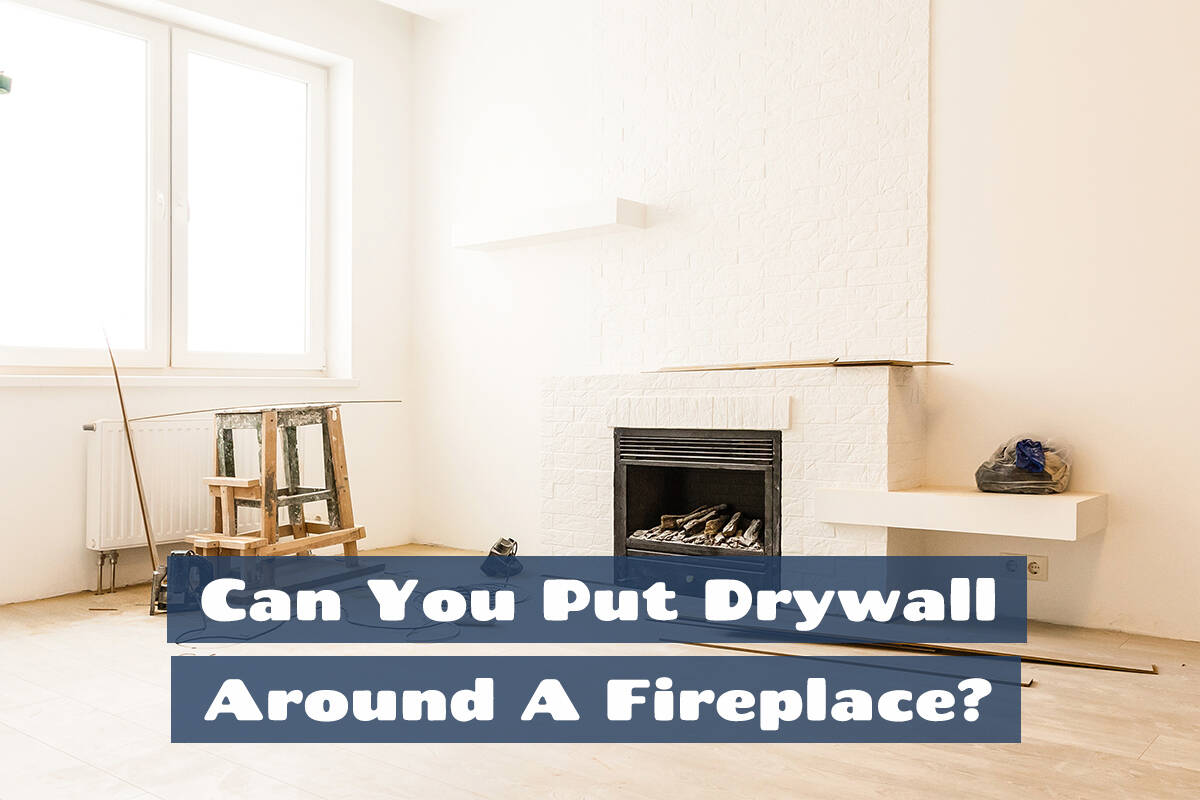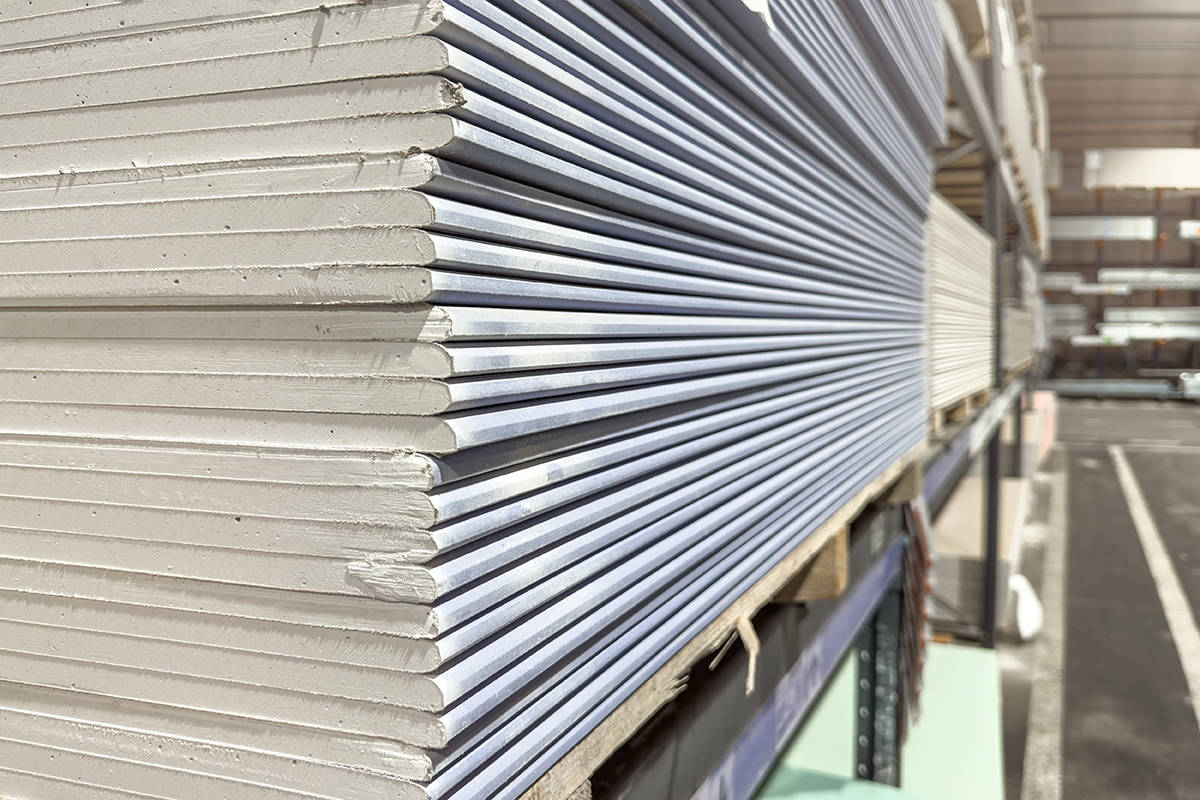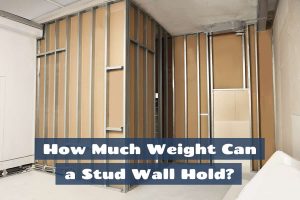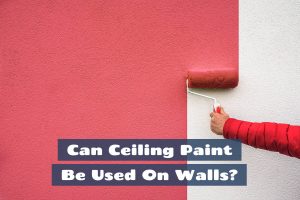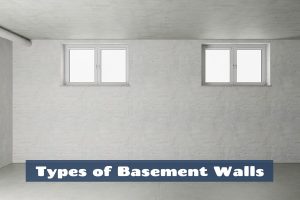You can put drywall around a fireplace, but there are certain considerations and guidelines to follow to ensure safety and compliance with building codes. Drywall is a common material used for finishing walls around fireplaces, as it provides a smooth and clean surface for painting or other finishes.
However, it’s extremely important to understand that most types of drywall are highly flammable, and therefore, specific guidelines need to be followed when using this material to frame a fireplace.
Let’s look at the best types of drywall to use near a fireplace and explain which other factors need to be considered before beginning your fireplace project.
Safety Guidelines for Drywall Around a Fireplace
Standard drywall, also known as gypsum board or plasterboard, is considered to be relatively fire-resistant, but it is not entirely fireproof. It is made from a core of gypsum, which is a naturally occurring mineral sandwiched between layers of paper. Gypsum is a non-combustible material, and the water content in the gypsum core of drywall helps to slow the spread of fire.
However, standard drywall will eventually begin to degrade and lose its structural integrity when exposed to high temperatures and flames over time. It is for this reason that standard drywall is not recommended for applications where it will come into close contact with high levels of heat, for example, around fireplaces.
Instead, heat-resistant drywall types can be used to improve levels of safety. There are also other safety features that need to be followed to minimize the incidence of house fires, including ensuring minimum clearance distances between the fireplace and the drywall and sealing any gaps around the fireplace with an appropriate sealant.
Fireplace Clearance Requirements
Most building codes require specific clearance distances between the fireplace opening and combustible materials like drywall. These clearance requirements are in place to prevent the risk of fire. The exact clearance distances vary depending on the type of fireplace and the specific building code in your area.
For a gas fireplace, it is standard practice for drywall to be installed at a minimum of 6 inches away from the fireplace. This measurement can be different if you have a wood-burning stove or an electric fireplace, so it’s important to check the clearance requirements with your local building code.
Non-Combustible Backer
If you want to install drywall around your fireplace, you’ll likely need to first install a non-combustible backer. This is a layer of fire-resistant material that gets wedged between the fireplace and the drywall.
This backer material, often made of cement board or another approved non-combustible material, helps protect the drywall from heat and reduces the risk of fire.
Heat-Resistant Drywall
Regular drywall should never be used around a fireplace because it is highly flammable. For your own safety and in order to comply with most building codes, you should use a heat-resistant type of drywall. Types of heat-resistant drywall include Type X and Type C.
This type of drywall is designed to provide additional fire resistance and can be a suitable choice for application around a fireplace. Your local building code may dictate which type of heat-resistant drywall you have to use, or you may be able to choose between Type X and Type C.
Both of these types of drywall are gypsum-based and have 60-minute wall rating systems, but it is widely agreed that Type C is preferable to Type X when it comes to fire resistance. This is because Type C drywall has a greater level of additives which aid in minimizing fire risks.
Sealants and Firestop Materials
When using drywall around a fireplace, you’ll need to ensure that all gaps and seams around the fireplace are properly sealed. Fire-resistant caulking or other approved firestop materials should be applied to the seams before the fireplace is used because this will prevent heat from reaching the drywall.
Follow Instructions
If you’re installing a prefabricated fireplace or a fireplace insert, it’s crucial to follow the manufacturer’s installation instructions and guidelines for clearance distances and wall materials. This could mean that minimum building code clearances are not enough, and you need to extend the distance between the fireplace and the drywall surround.
Neglecting to follow manufacturer instructions could potentially put you and your family in danger, and it can also void your home insurance so that your property isn’t protected in the event of a fire.
Consult Building Codes
Before beginning any work, check with your local building department to understand the specific regulations and requirements for installing drywall around a fireplace in your area.
Failure to do this can result in hefty fines, and it can also make your property difficult to sell in the future if the fireplace and surrounding drywall have been incorrectly installed. Building codes are in place to protect buildings and their inhabitants from unsafe scenarios, so they need to be followed in order to keep your family out of harm.
Professional Installation
It’s recommended to consult a professional contractor or fireplace specialist to ensure proper installation and compliance with safety standards.
They can help you navigate the requirements and make sure the installation is done correctly. If you’re not familiar with fireplace installations or building codes, it’s best to seek professional assistance to ensure a safe and compliant installation.
Types of Fire Resistant Drywall
Fire-resistant drywall, also known as Type X or Type C drywall, is designed to provide enhanced fire protection compared to standard drywall. It is commonly used in areas where fire resistance is a concern, such as near fireplaces and furnaces.
There are two main types of fire-resistant drywall known as Type X and Type C.
Type X Fire-Resistant Drywall
Type X drywall is formulated with additional gypsum and other additives to increase its fire resistance. It is typically used in fire-rated wall and ceiling assemblies to help prevent the spread of fire and provide a specific fire rating. Type X drywall contains glass fibers, which help improve its fire-resistant properties by slowing down the transfer of heat.
It is often used in residential and commercial applications where fire protection is required, such as around fireplaces, in stairwells, and in multi-unit buildings. This type of drywall is available in various thicknesses, with 5/8-inch being a common thickness used for fire-rated walls and ceilings.
Type C Fire-Resistant Drywall
Type C drywall, also known as improved Type X, has a higher level of fire resistance compared to Type X drywall. It incorporates specialized core materials and additives to achieve greater fire protection. Type C drywall is often used in applications where higher fire ratings are required, such as in commercial buildings or areas with more stringent fire safety regulations.
Like Type X, Type C drywall is available in various thicknesses to meet specific fire-rated requirements. Type X drywall will be appropriate for use around fireplaces in most residential scenarios; however, if you want an extra piece of mind, you can opt for Type C drywall.
It’s important to note that no type of drywall is completely fireproof, and it will only help to slow down the spread of a fire. Fire safety measures should always be taken into consideration when installing a fireplace.
